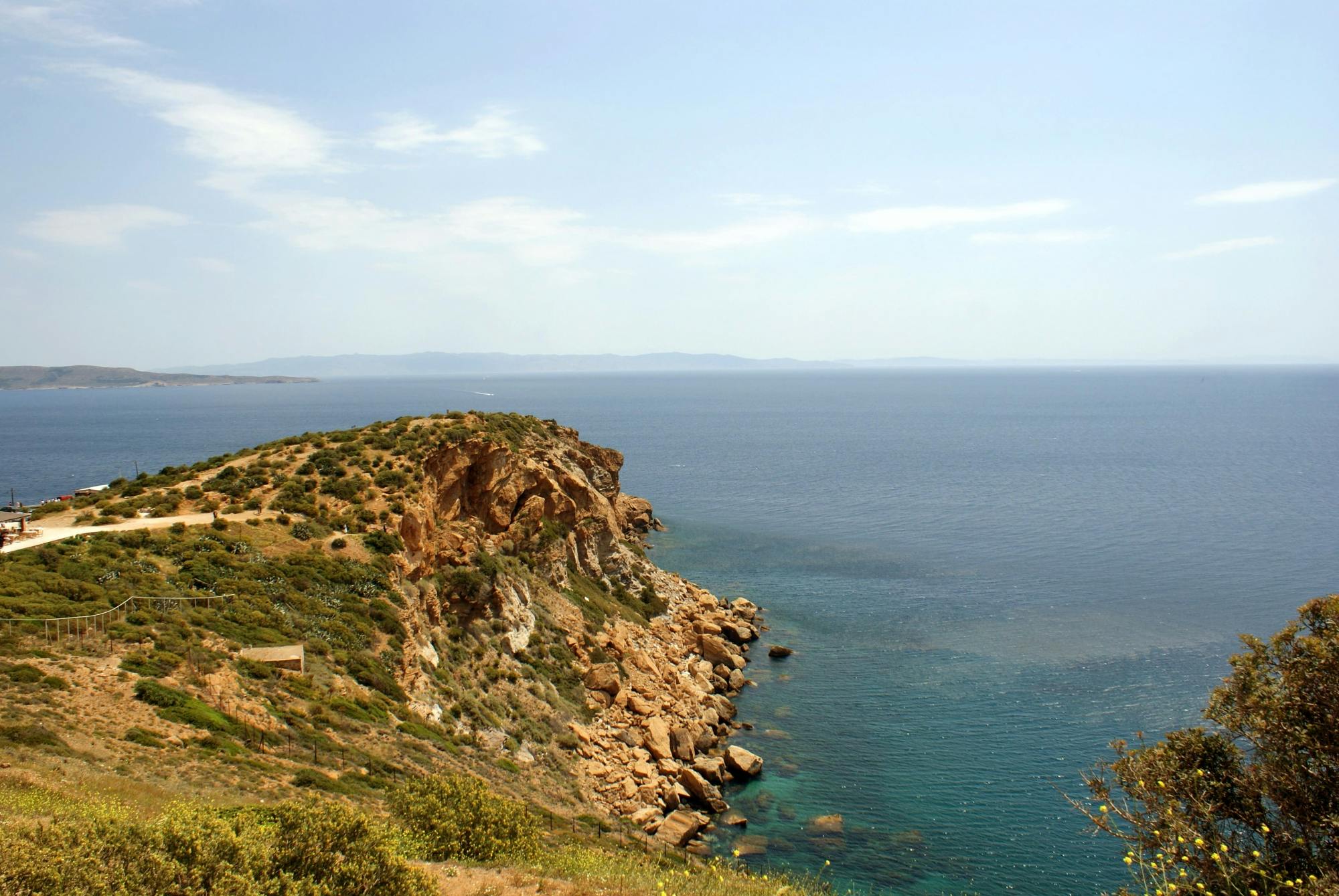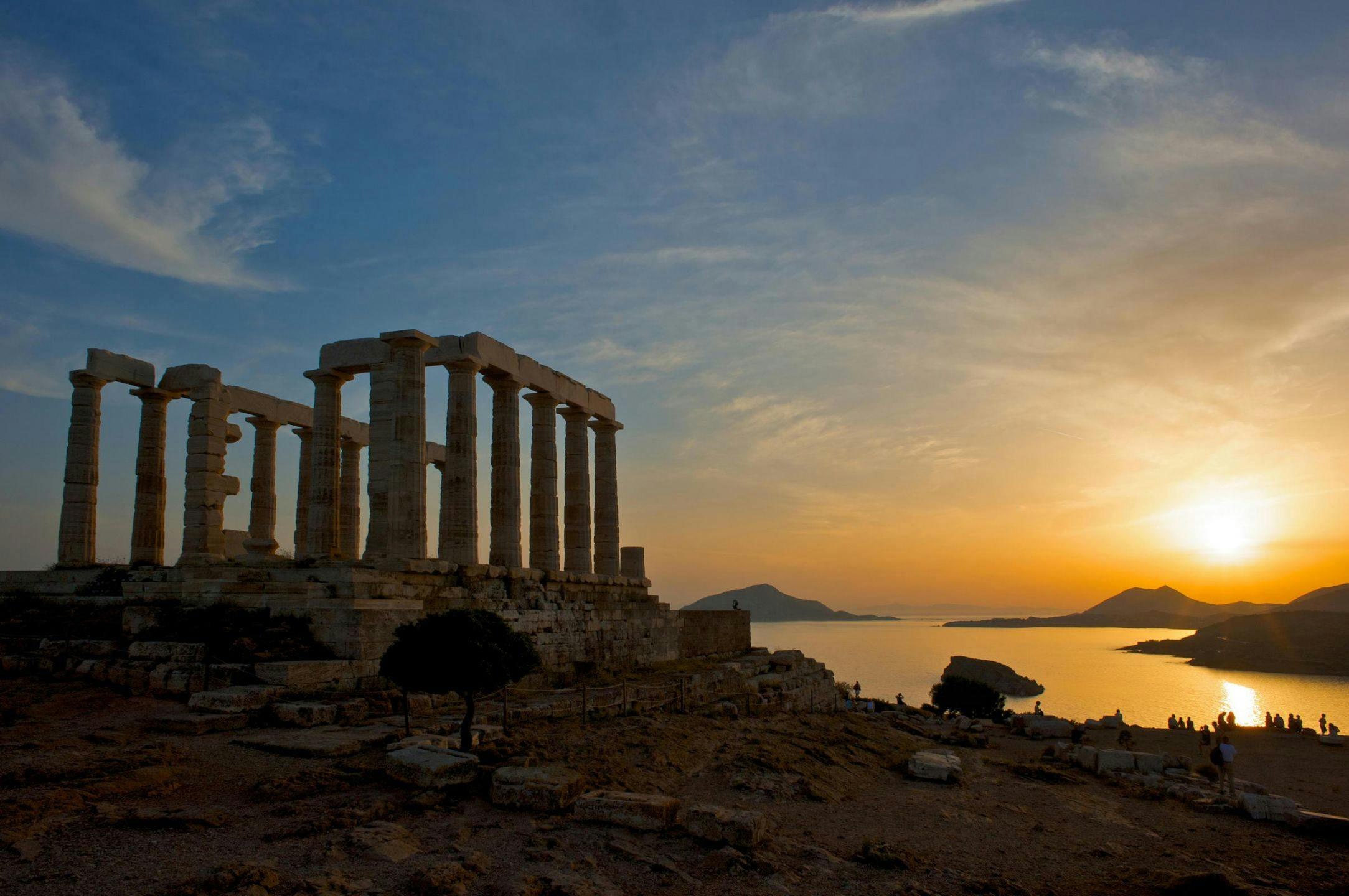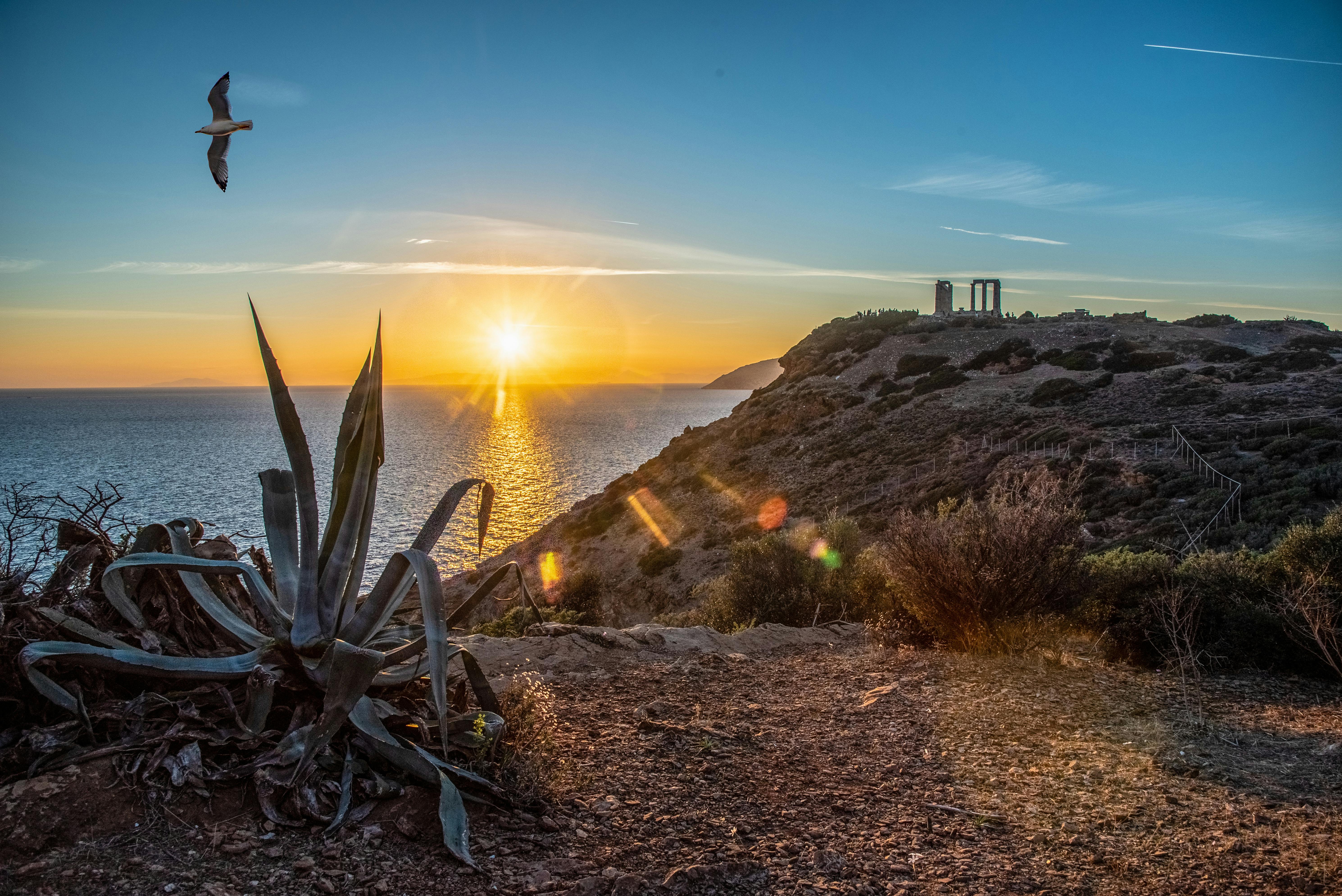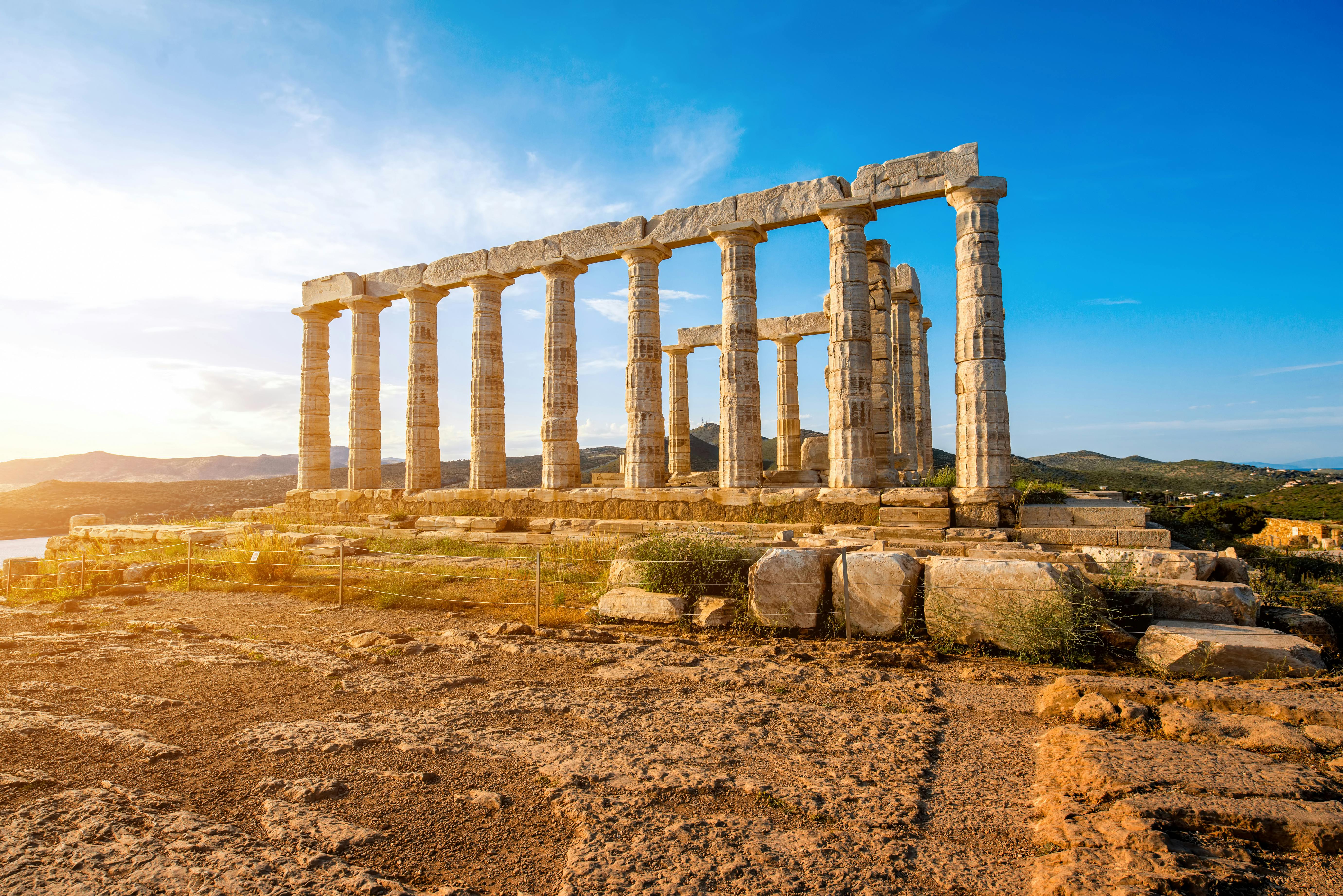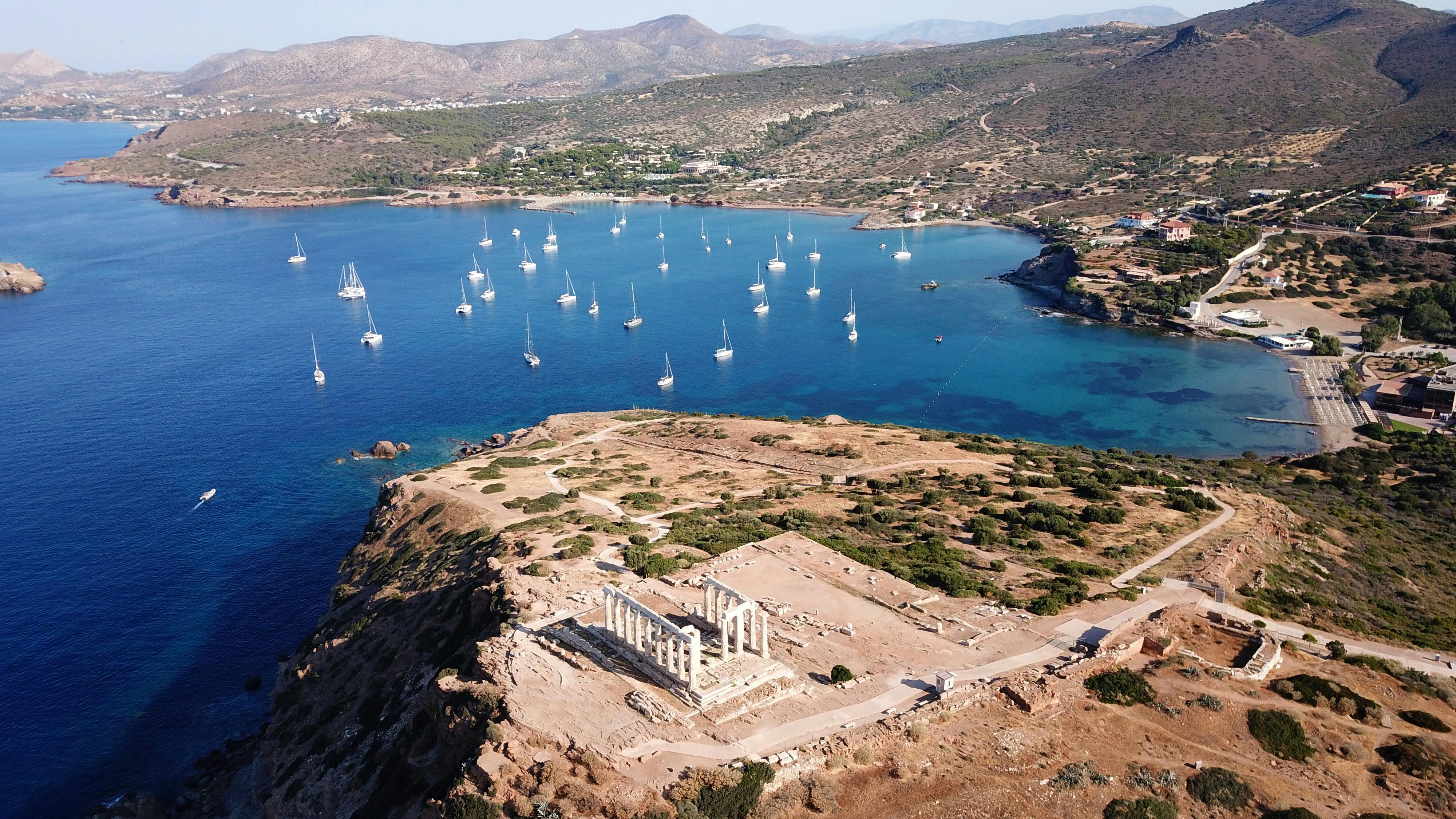The Temple of Poseidon is an ancient Greek temple located on the southern tip of the Attica peninsula, overlooking the Aegean Sea. Dedicated to the god of the sea, Poseidon, the temple is one of the most significant surviving examples of ancient Greek architecture and stands as a testament to the power and influence of ancient Athens.
The temple was built in the middle of the 5th century BCE, during the Golden Age of Athens, under the leadership of the famous Athenian statesman, Pericles. It was designed by the renowned architect, Iktinos, who also worked on the construction of the Parthenon, another famous temple in Athens.
The Temple of Poseidon was constructed on the site of an earlier temple, which had been destroyed by the Persians during their invasion of Greece in 480 BCE. The new temple was built in a Doric style, with six columns across the front and back and thirteen columns along the sides. It was made from white marble and featured intricate carvings and reliefs depicting scenes from Greek mythology.
The temple was located on a rocky promontory, known as Cape Sounion, which juts out into the Aegean Sea. This location was strategically important for the Athenians, as it was a key point for monitoring and controlling maritime traffic in the region. The temple also served as a beacon for sailors, who could see its white marble columns from miles away and use it as a navigational aid.
Over the centuries, the Temple of Poseidon was damaged and partially destroyed by earthquakes, invasions, and plundering. In the Middle Ages, it was used as a fortress by the local rulers, and during the Ottoman period, it was used as a quarry for building materials. In the 19th century, the temple was restored and partially reconstructed, with some of the missing columns replaced with new ones.
Today, the Temple of Poseidon is one of the most popular tourist attractions in Greece, attracting thousands of visitors each year. Its stunning location, perched high above the sea, offers breathtaking views of the Aegean and the surrounding coastline. The temple is also a popular spot for watching the sunset, with many visitors flocking to Cape Sounion in the late afternoon to witness the spectacular sight.
The Temple of Poseidon stands as a testament to the rich cultural heritage of ancient Greece and the enduring legacy of the ancient Athenians. Its grandeur and beauty continue to inspire and captivate visitors from around the world, making it a must-see destination for anyone interested in the history and culture of this ancient civilization.
